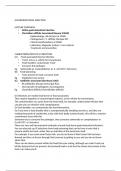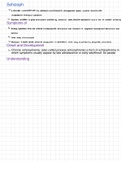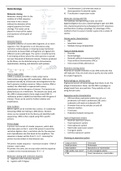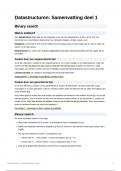Class notes
GASTROINTESTINAL INFECTIONS
- Course
- Institution
• Define gastrointestinal infection • Clostridium difficile Associated Disease (CDAD) - Epidemiology; risk factors for CDAD - Pathogenesis / C. difficile ribotype 027 - Clinical manifestations of CDAD - Laboratory diagnosis (culture / non-culture) - Treatment and prevention
[Show more]






